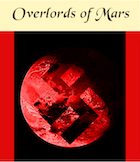Jay Dyer, once again makes things up, relating to the ecumenical council of Constance.
He contention is that the Council of Constance “ruled” who was the real Pope during the period in which there were three Popes (two of which were fake). This is absolute nonsense and of course, yet another lie.
He says this in this mostly boring and irrelevant podcast from about 2 hours and 10 or 11 minutes or so and carries on until about 2 hours and 30 minutes. He repeatedly says that the council of Constance resolved the issue.
This is absolutely and completely a lie.
What happened is that the three Popes were convened to this council originally by the fake Antipope John XXIII, who was pushed to do so by the Emperor. So nothing happening here except them basically saying: “We gotta sort this out.” As a result of this investigation John XXIII was going to be investigated for scandalous conduct so he ran away. In the meantime, the two remaining possible “Popes” Gregory XII and Benedict XIII came to an agreement which was that Gregory XII would be accepted as the one true Pope and instead of being deposed (as were the other two, for being antipopes) he would resign and a new and valid Pope (from the Roman see, would be elected). So that’s what happened.
In essence the one true Pope, Gregory XII resolved the issue. Not the Council.
This is typical of Jay, he just lies, makes straw man “arguments” and completely makes things up. As I demonstrated on my video of our debate, he literally makes quotes up from various documents they supposedly come from, and refers to others that are completely unrelated to the topic at hand.
As I said right from the start, the man is a liar and an intellectual pigmy. All you need to do is go read the documents he quotes and take them in proper context, because he of course will quote mine and try and twist black into being white and vice versa.
You can read the whole detail of what happened here.
In short, it was NOT the council that decided anything, but Gregory XII, the one true pope that for the good of the Church proposed the solution that everyone agreed with and everyone agreed he had the full authority to make this decision and that all of his appointments were in fact the only ones that would be valid, since he was the real pope.
Gregory XII sent to Constance as his representatives his protector Carlo Malatesta, the Lord of Rimini, and the Dominican cardinal, John Domenici—to Constance indeed, but not to the General Council assembled there by the authority, and in the name, of John XXIII. The envoys’ commission was to the emperor Sigismund, presiding over the various bishops and prelates whom his zeal to restore peace to the Church had brought together. To these envoys—and to Malatesta in the first place—Gregory gave authority to convoke as a General Council—to convoke and not to recognise—these assembled bishops and prelates ; [4] and by a second bull [5] he empowered Malatesta to resign to this General Council in his name.
The emperor, the bishops and prelates consented and accepted the role Gregory assigned. And so, on July 4, 1415. Sigismund, clad in the royal robes, left the throne he had occupied in the previous sessions for a throne placed before the altar, as for the president of the assembly. Gregory’s two legates sat by his side facing the bishops. The bull was read commissioning Malatesta and Domenici to convoke the council and to authorise whatever it should do for the restoration of unity and the extirpation of the schism—with Gregory’s explicit condition that there should be no mention of Baldassare Cossa, [6] with his reminder that from his very election he had pledged himself to resign if by so doing he could truly advance the good work of unity, and his assertion that the papal dignity is truly his as the canonically elected successor of Urban VI.
Malatesta then delegated his fellow envoy, the cardinal John Domenici, to pronounce the formal operative words of convocation [7] ; and the assembly—but in its own way—accepted to be thus convoked, authorised and confirmed in the name “of that lord who in his own obedience is called Gregory XII” [8]. The council next declared that all canonical censures imposed by reason of the schism were lifted, and the bull was read by which Gregory authorised Malatesta to make the act of abdication [9] and promised to consider as ratum gratum et firmum, and forever irrevocable, whatever Malatesta, as his proxy, should perform. The envoy asked the council whether they would prefer the resignation immediately, or that it should be delayed until Peter de Luna’s decision was known. The council preferred the present moment. It ratified all Gregory XII’s acts, received his cardinals as cardinals, promised that his officers should keep their posts and declared that if Gregory was barred from re-election as pope, this was only for the peace of the Church, and not from any personal unworthiness. Then the great renunciation was made [10], ” …. renuncio et cedo …. et resigno …. in hac sacrosancta synodo et universali concilio, sanctam Romanam et universalem eccleciam repraesentante” and the council accepted it [11], but again as made “on the part of that lord who in his own obedience was called Gregory XII”. The Te Deum was sung and a new summons drawn up calling upon Peter de Luna to yield to the council’s authority.
The work of Pisa was now almost undone, and by this council which, in origin, was a continuation of Pisa. It had suppressed the Pisan pope whom Pisa, with biting words, had rejected as a schismatic and no pope.”
Phillip Hughes, A History of the Church, p. 289-291
All it takes to catch Dyer out in his lies is to actually refer to the documents and events he intentionally lies about and misrepresents.
It’s just like all the fake nonsense “scientists” and “historians” do, when, like “journalists” they give a bunch of “references”. No one ever bothers to look them up. I you do, you will find they literally list the very proof of their own lies.








